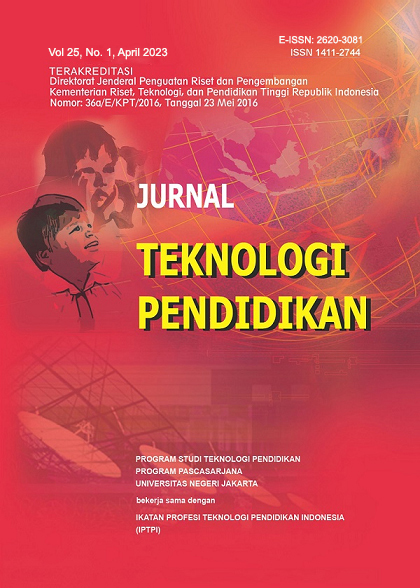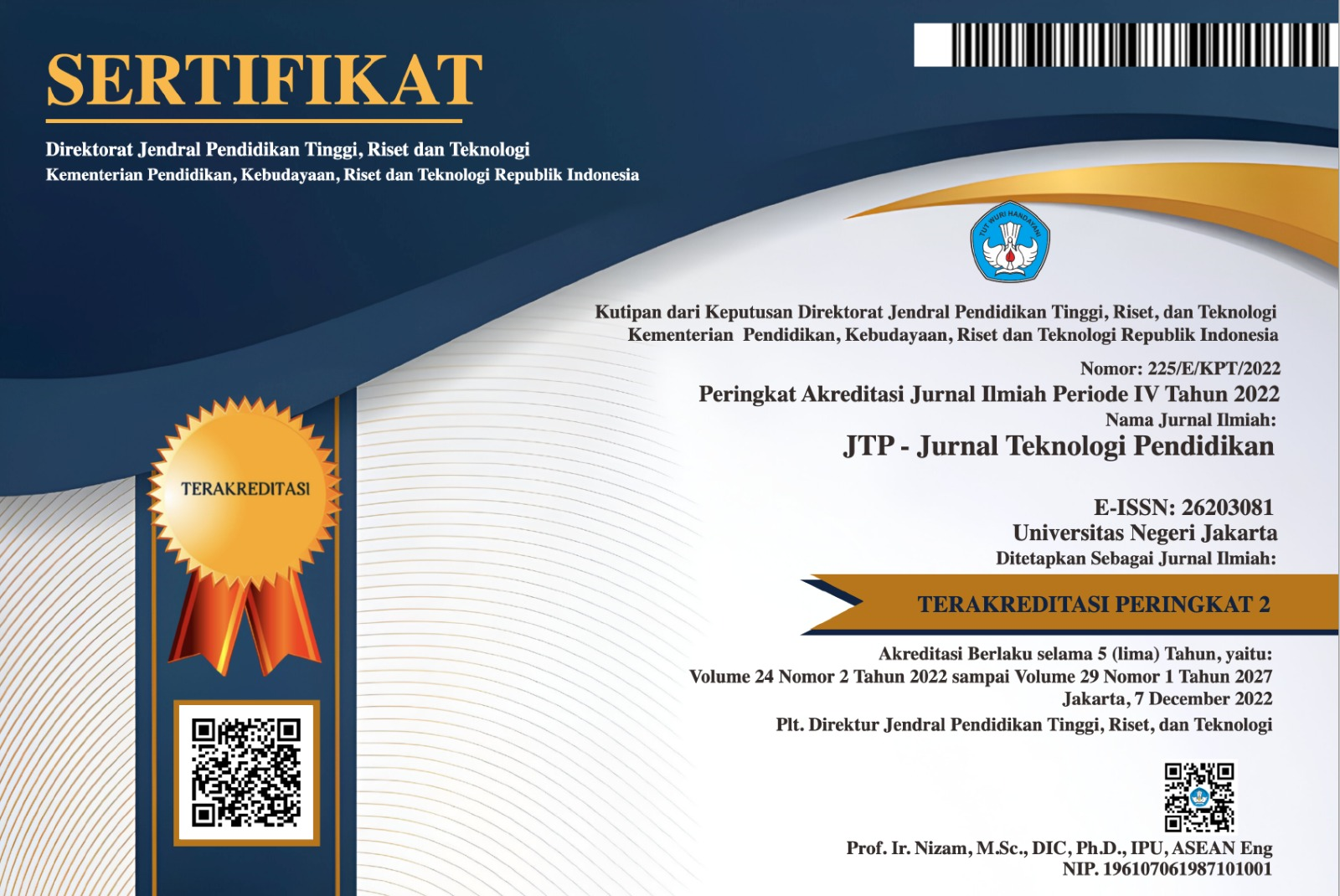Strategy of Educational Institutions to Improve the Quality of Teachers in Digital Era
DOI:
https://doi.org/10.21009/jtp.v25i1.38308Keywords:
Strategy, Innovation, Educational Institutions, Pandemic PeriodAbstract
The quality of the teacher's attitude is the skill and understanding possessed by someone related to teaching and character. This study aims to find out how the strategies and innovations of educational institutions form in improving the quality of education. This study uses qualitative research with a descriptive approach. The results of the research show that the strategy for educational institutions during a pandemic is for example the existence of a program made by the school principal. The purpose of implementing the program is to improve the quality of teachers both in normal and future times. The forms of these activities are seminars, microteaching and book review. The current digital era is a period when information is easily and quickly obtained and disseminated using digital technology. This activity has had a good impact on the quality of teachers in school institutions as evidenced by the increase in teacher quality both in personality, knowledge or socially for each teacher which also has an impact on the learning process provided by teachers during a pandemic. During a pandemic covid-19, there are several strategies and innovations carried out with the aim of improving the quality of human resources in the institution. Meanwhile, the purpose of this research is to find out the strategies and innovations that have been carried out to improve the quality of teachers during a pandemic covid-19. The implications of this research can be used as a reference for other institutions to improve the quality of teachers in any situation and condition, including during the current covid-19 pandemic in the 21st century digital era.
References
Aziz, R., Novezry, A. R., Siswoyo, S. R., Mustofa, M. H., & Hady, M. S. (2021). Students’ Social Care During the COVID-19 Pandemic: How Do School and Family Make Collaboration to Develop it? Journal of Education Research and Evaluation, 5(4), 542. https://doi.org/10.23887/jere.v5i4.36911
Čamaj, J., Kendra, M., Šperka, A., & Mašek, J. (2019). Development and Current Trends in the Use of Mobile Devices. Transport Technic and Technology, 15(2), 28–35. https://doi.org/10.2478/ttt-2019-0009
Cordery, J., & Parker, S. K. (2009). Work Organization. The Oxford Handbook of Human Resource Management, 9780199547(January). https://doi.org/10.1093/oxfordhb/9780199547029.003.0010
Digidata. (2022). Transformasi Digital dalam Dunia Perbankan. Sokrates. https://www.digidata.ai/2022/02/14/transformasi-digital-dalam-dunia-perbankan/
Duhé, S. (2021). What is Strategy? Business for Communicators, October, 179–191. https://doi.org/10.4324/9781003000600-11
Godber, K. A., & Atkins, D. R. (2021). COVID-19 Impacts on Teaching and Learning: A Collaborative Autoethnography by Two Higher Education Lecturers. Frontiers in Education. https://doi.org/10.3389/feduc.2021.647524
Farida Isroani, Strategi Lembaga Pendidikan Untuk Meningkatkan Kualitas Pembelajaran Di Masa Pandemi Covid-19 Di Era Digital, Sustainable: Jurnal Kajian Mutu Pendidikan, Vol 6 No 1 (2022), 221-227
Hasibuan, M. B., Gultom, S., Wildansyah, & Sipayung, R. (2022). Online Learning Implementation During the COVID-19 Pandemic. Proceedings of the 6th Annual International Seminar on Transformative Education and Educational Leadership (AISTEEL 2021), 591(Icla 2020), 26–31. https://doi.org/10.2991/assehr.k.211110.092
Initiative, E. U., Student, E., & Initiative, C. (2022). European Network of Innovative Higher Education Institutions ( ENIHEI ) What the ENIHEI does. European Education Area. https://education.ec.europa.eu/education-levels/higher-education/innovation-in-education/european-network-of-innovative-higher-education-institutions
Johnson, D. (2017). The Role of Teachers in Motivating Students To Learn Davion Johnson. Journal of Graduate Studies in Education, 9(1), 46–49.
Julhijah, N. (2017). Micro Teaching Practice in Introducing Teaching Methods and Techniques. 6(2), 209–222.
Lau, R. W. H., Yen, N. Y., Li, F., & Wah, B. (2014). Recent development in multimedia e-learning technologies. World Wide Web, 17(2), 189–198. https://doi.org/10.1007/s11280-013-0206-8
Maleka, S. (2015). Strategic Management and Strategic Planning Process. South Africa Perspective, First Edition, 1, 1–29. https://www.researchgate.net/publication/273757341%0Ahttps://www.researchgate.net/publication/273757341_Strategic_Management_and_Strategic_Planning_Process
Downloads
Published
How to Cite
Issue
Section
License
Jurnal Teknologi Pendidikan is an Open Access Journal. The authors who publish the manuscript in Jurnal Teknologi Pendidikan agree to the following terms.
Attribution-ShareAlike 4.0 International (CC BY-SA 4.0)
-
Attribution — You must give appropriate credit, provide a link to the license, and indicate if changes were made. You may do so in any reasonable manner, but not in any way that suggests the licensor endorses you or your use.
-
ShareAlike — If you remix, transform, or build upon the material, you must distribute your contributions under the same license as the original.
- No additional restrictions — You may not apply legal terms or technological measures that legally restrict others from doing anything the license permits.
Notices:
- You do not have to comply with the license for elements of the material in the public domain or where your use is permitted by an applicable exception or limitation.
- No warranties are given. The license may not give you all of the permissions necessary for your intended use. For example, other rights such as publicity, privacy, or moral rights may limit how you use the material.








